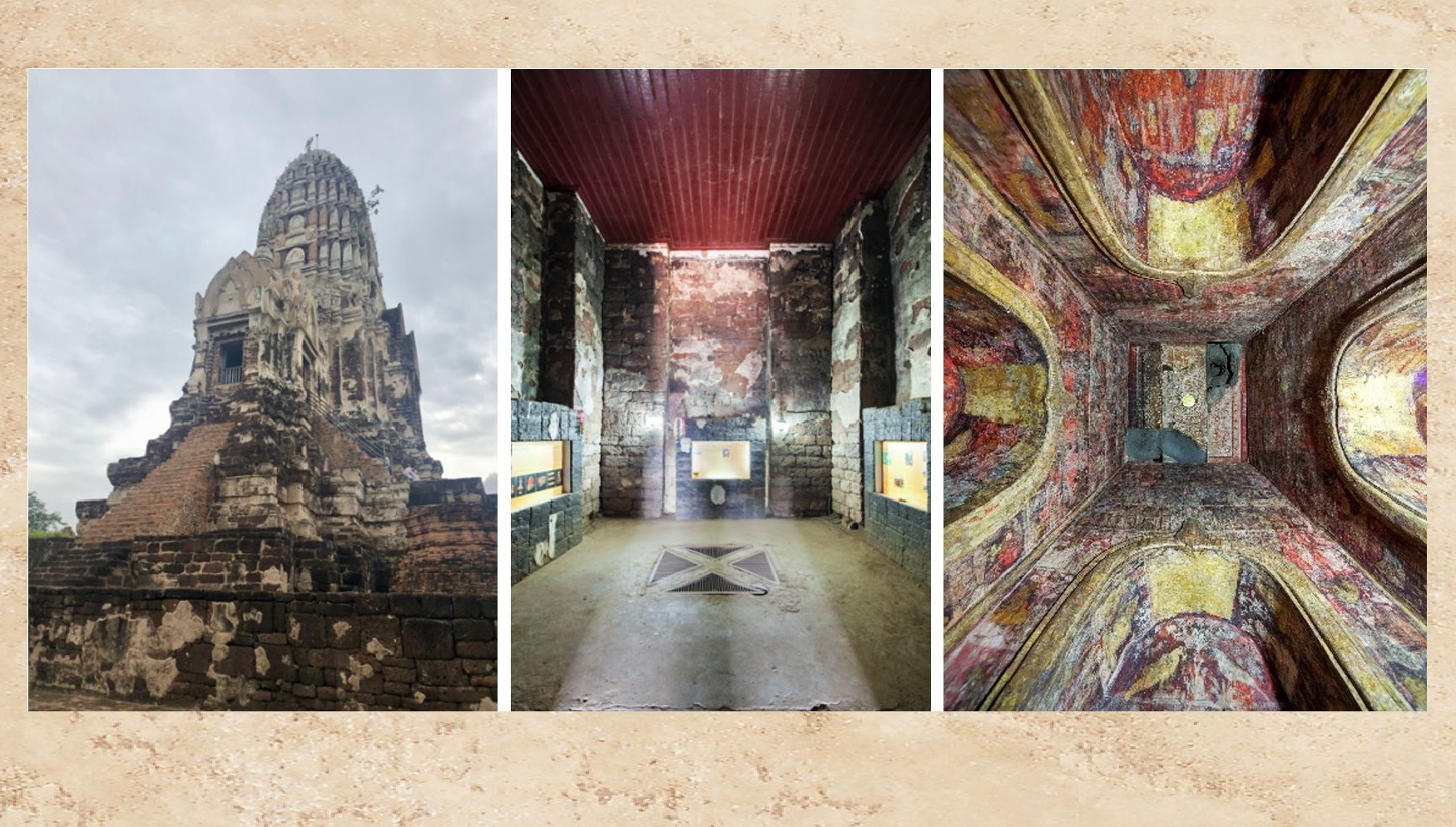Environmental Factors Affecting the Deterioration of the Mural Paintings Inside the Crypt of Wat Ratchaburana, Phra Nakhon Sri Ayutthaya Province
Keywords:
preventive conservation, microclimate control, crypt of Wat RatchaburanaAbstract
The aim of this research is to study the three environmental factors namely, temperature, relative humidity and air quality, affecting the deterioration of the mural paintings inside the crypt of Wat Ratchaburana, Phra Nakhon Sri Ayutthaya Province. The findings are as follows:
Wat Ratchaburana was built by Chao Sam Phraya in 1424 and the crypt of Wat Ratchaburana is still in good condition. There is a cella or small central hall inside the prang containing the crypt, which contains a two-level crypt. The space inside the crypt has a microclimate. The mural paintings inside the crypt are beginning to crack, the colour is changing and fading, and they are affected by salt weathering and dust. Moreover, snake stains, millipedes and bats are found inside the central hall.
The environmental monitoring of temperature, relative humidity and air quality conducted inside the crypt showed that there was no control of temperature, relative humidity and particles and dust in the air. Temperature and relative humidity changes depending on the weather conditions which have caused the deterioration of the mural paintings. Therefore, preventive conservation should focus on temperature and relative humidity control and improve the ventilation system. The doors and windows should be opened to increase ventilation and air exchange rates if there is no climate control system installed. Moreover, tourists should not be allowed to walk down the stairs to the lower crypt.
References
กรมศิลปากร, 2504. พระราชพงศาวดารกรุงศรีอยุธยา (ฉบับหลวงประเสริฐอักษรนิติ์ และฉบับกรมพระปรมานุชิตฯ) และพงศาวดารเหนือฉบับพระวิเชียรปรีชา (น้อย) เล่ม 2. พระนคร: องค์การค้าของคุรุสภา.
กรมศิลปากร, 2557. จิตรกรรมและศิลปวัตถุในกรุพระปรางค์วัดราชบูรณะ จังหวัดพระนครศรีอยุธยา. กรุงเทพฯ: บริษัทไทภูมิ พับลิชชิ่ง.
จิราภรณ์ อรัณยะนาค, 2535. บทบาทของเกลือและความชื้นบนโบราณสถาน. (เอกสารอัดสำเนา) ม.ป.ท.
เสมอชัย พูลสุวรรณ, 2539. สัญลักษณ์ในงานจิตรกรรมไทย ระหว่างพุทธศตวรรษที่ 19 ถึง 24. กรุงเทพฯ: สำนักพิมพ์มหาวิทยาลัยธรรมศาสตร์.
Cannistraro M. & Guglielmino C., 2019.“Considerations on the Thermo-hygrometric and Luminous Microclimate of a Museum Building. A Case Study Messina Museum.” TECNICA ITALIANA-Italian Journal of Engineering Science 63 (2-4): 211 - 220.
Kuntz M., 2003. “Designed for Ceremony: The Cappella Paolina at the Vatican Palace.” Journal of the Society of Architectural Historians 62 (2): 228-255.
Larzen P. K., 2007. “Climate Control in Danish Churches.” Museum Microclimates (pp.167 – 174). Copenhagen: National Museum of Denmark.
Martin-Sanchez P.M., Miller A.Z. & Saiz-Jimenez C., 2015. “Lascaux Cave : An Example of Fragile Ecological Balance in Subterranean Environments.” Microbial Life of Cave Systems (pp.283 – 286). Berlin: Walter de Gruyter.
Mora P., 1974. Causes of deterioration of mural paintings. Rome: International Centre for the Study of the Preservation and the Restoration of Cultural Property.
The Getty Conservation Institute, 2019. Conservation Perspectives: The GCI Newsletter: Rock Art Conservation. 34 (1).

Downloads
Published
Issue
Section
License
บทความนี้เป็นผลงานของข้าพเจ้าแต่เพียงผู้เดียว และ/หรือเป็นผลงานของข้าพเจ้าและผู้ร่วมงาน ตามชื่อที่ระบุในบทความจริง และเป็นผลงานที่มิได้ถูกนำเสนอหรือตีพิมพ์ที่ใดมาก่อน




